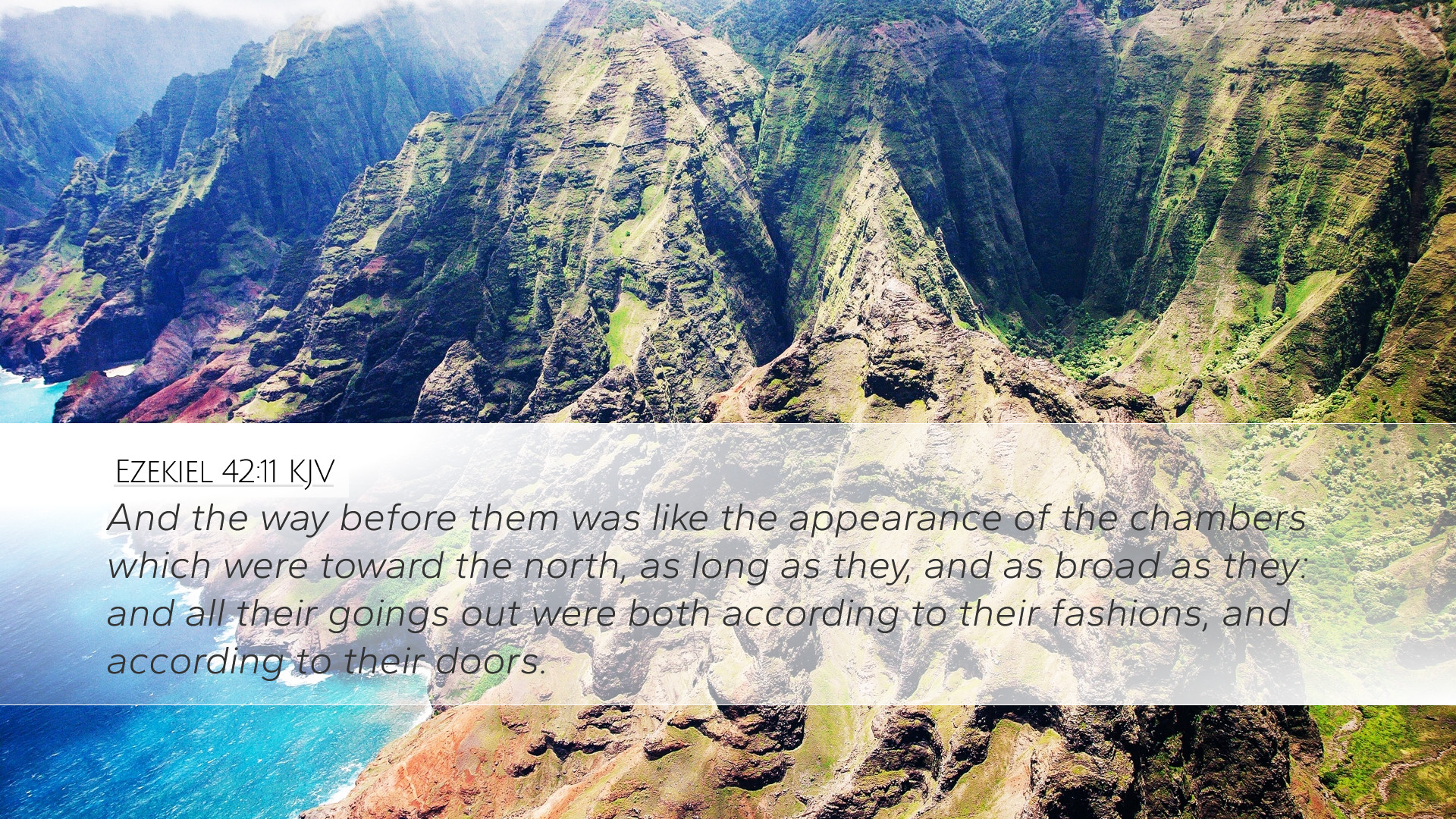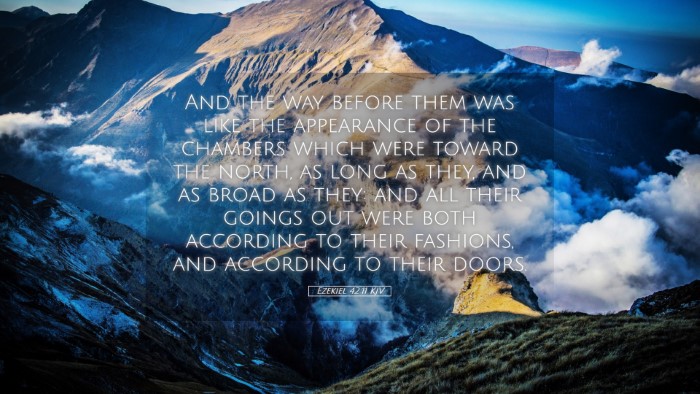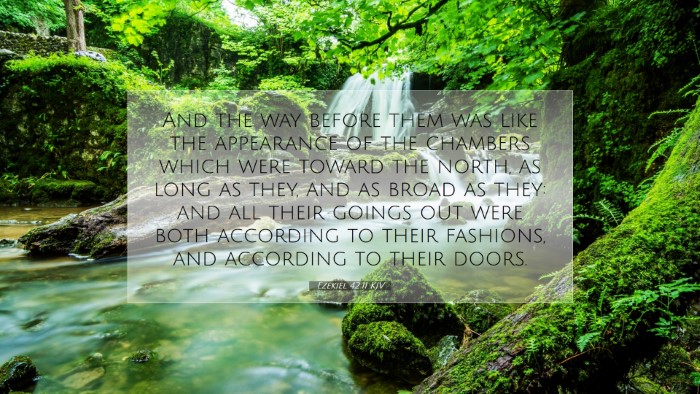Ezekiel 42:11 Commentary
Verse Reference: Ezekiel 42:11
"And the way before them was like the appearance of the chambers which were toward the north: they were of a length of an hundred cubits, and of a breadth of fifty cubits."
Contextual Overview
In this verse, Ezekiel describes the structure of the temple and its chambers, focusing on specific dimensions and layouts within the sacred context. This description is part of a broader vision Ezekiel received from God regarding the future of Israel and the restoration of the temple worship.
Insights from Public Domain Commentaries
The following insights draw from the works of various theologians including Matthew Henry, Albert Barnes, and Adam Clarke, providing a rich understanding of Ezekiel 42:11.
Matthew Henry's Commentary
Henry emphasizes the orderly arrangement of the temple and its chambers, signifying God's desire for order in worship. He notes that the "way before them" likely refers to the pathways that lead to these chambers, indicating an organized approach to worship where the faithful can adequately prepare to meet God.
Henry also highlights the significance of the dimensions given, expressing that they reflect God's intention for ample space for His people to gather without the chaos that can often accompany man's religious practices. This measurement contributes to the overall holiness and reverence owed to God's house.
Albert Barnes' Notes
Barnes discusses the symmetry and proportions of the structure described in this chapter, indicating that the precise measurements underscore the idea of divine perfection. He remarks that the chambers' length and breadth not only serve practical purposes but also represent spiritual truths about God's kingdom, which is marked by clarity and order.
He draws connections to other biblical instances of structure and design in the tabernacle and previous temples, suggesting a continuity of God's plan through architectural symbolism that points towards the heavenly realities.
Adam Clarke's Commentary
Clarke emphasizes the structure's purpose as serviceable within the context of worship. He notes that the chambers were likely designated for particular priestly functions or communal gatherings, thus serving the needs of the people in their dealings with God. The dimensions conveyed a sense of abundance, suggesting that God's provisions for worship are never lacking.
Furthermore, Clarke interprets this particular layout as a foreshadowing of the spiritual reality where believers, in Christ, have access to God and His presence. This relational aspect underscores the idea that through designated and orderly worship, one approaches God with reverence and expectation.
The Significance of Dimensions
The dimensions given in Ezekiel 42:11 play a critical role in understanding the nature of God's house. The standard of measurements is often an indication of God's perfection and order:
- Length: 100 cubits - Symbolizing completeness and fulfillment in God's purposes.
- Breadth: 50 cubits - Suggesting spaciousness, accommodating many people in worship.
These dimensions serve not just as logistics but also as a metaphor for the spiritual spaciousness of God's grace, where His followers can find refuge, restoration, and renewal.
Applications for Worship and Ministry
Pastors and church leaders can find valuable insights in this passage regarding the organization of church life:
- Structure of Worship: Encourages the creation of a physical and spiritual layout that fosters reverence and focus during worship.
- Spiritual Accessibility: Indicates the importance of creating spaces that invite people in – emphasizing that God desires to meet with His people.
- Order in Ministry: Encourages clarity in roles and functions within the church to reflect God's design for community and worship.
Conclusion
Ezekiel 42:11 serves as a potent reminder of the significance of structure and design in the context of worship. The divine vision provided to Ezekiel speaks to God’s overriding desire for order, accessibility, and reverence in the worship of His people. Through the insights from various public domain commentaries, it becomes evident that the descriptions serve both a practical and spiritual purpose, inviting believers into a deeper understanding of God’s house and their relationship with Him.


